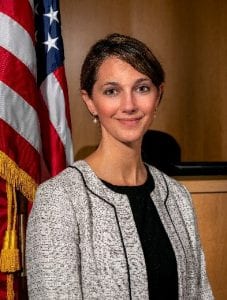 By Casey Lucius, Assistant to the City Manager, City of Marco Island
By Casey Lucius, Assistant to the City Manager, City of Marco Island
50 Bald Eagle Drive, Marco Island, FL 34145, clucius@cityofmarcoisland.com
What does it mean to be a team? How can a finance director, a public works director, a police chief, a city clerk, and five or six other experienced, smart, and talented professionals work together to accomplish common goals? Honestly, when the general manager of water and sewer operations is in a weekly directors’ meeting and provides an update on smoke testing the gravity sewer lines, why should the Police Chief pay attention?
This is likely the scene in many cities and at many weekly staff meetings where the department directors come together to share important updates about operations in their department and yet there is a total disconnect with other leaders in the organization who are focused on their own daily operations. When I came to the City of Marco Island I noticed that our directors’ meetings consisted of private conversations, texting, and scrolling through emails while one person was giving a departmental update. More importantly, it appeared the directors in that room were individuals leading their departments, but they weren’t collectively a team representing the organization. I wasn’t the only one to observe this unfortunate dynamic. The city manager was well aware of the distractions in the room and we put our heads together to find a solution.
City Manager Mike McNees asked me to write ten words that I thought were essential components of leadership or teamwork. He also wrote ten words and we compared notes. We agreed on a final list of twelve powerful, yet vague, descriptors that would be showcased over the next twelve weeks at our staff meetings. Strips of paper with each word were put in a hat and each department head picked a word as the hat circulated among the group. Once everyone had a word and the order of presentations was established, there were only two rules: 1) One person will present each week, and 2) You have 15 minutes to present on your word.
 The presentations kicked off the next week and over the weeks that followed there was an apparent change happening in our weekly meetings. We are now eight weeks in to our twelve-week experience and certain outcomes have already emerged:
The presentations kicked off the next week and over the weeks that followed there was an apparent change happening in our weekly meetings. We are now eight weeks in to our twelve-week experience and certain outcomes have already emerged:
- It has sharpened the presentation skills of our department heads because unexpectedly the presentations themselves have become a competition to see who can provide the flashiest slides or the most entertaining clips.
- It has given that particular director ownership, not only over their word, but with the entire concept that the word embodies. That director has now become associated with problem solving, risk, accountability, trust, and so on.
- It has created an environment of attention and respect. Instead of individuals looking at their phones or having side conversations, everyone has started paying attention to the presenter and even asking questions, providing feedback, and giving examples.
- It has generated a sense of team. Sometimes when we think of a team, we envision a group working together and cheering each other on. This is true, but another important factor of teamwork is participation. We now have a room full of active participants.
- Likely the most significant outcome has been establishing shared values and standard terms. Part of working together includes articulating the values of the organization and this exercise has allowed every director to be a part of identifying our organizational values.
When we set out to start this exercise the goal was to move our directors from individual department heads to collectively leading the organization with a focus on overall organizational goals. Teamwork at its core is the ability to direct individual accomplishment toward common goals. In fact, a team is not really a team if it has no goals. Further, members of the team must buy-in and commit to the goals and this is only possible if there is participation. There must be participation in setting the organizational goals, fulfilling the goals, and celebrating accomplishment of the goals. When one department finishes a big project, it should be talked about and celebrated by all departments, after all, a successful project makes the entire organization look good. Ultimately, the team commits to succeed – together.
If you have noticed that your organization needs a dose of teambuilding to get re-energized or re-focused, I recommend the book Team Power by Jim Temme, or just do something as simple as putting twelve words in a hat and let the directors run with it. Especially after the past seven months of COVID-19 distractions, restrictions, and general challenges, it may be a good time to hit the re-start button on your staff meetings. It’s also a new fiscal year which is a good time for the organization to take a hard look at its priorities and make sure everyone is moving in the same direction.
Finally, I’ll leave you with a quote from my favorite General and President, Dwight Eisenhower who knew that one of the best ways to work through complex issues was by encouraging teamwork, honesty and communication.







